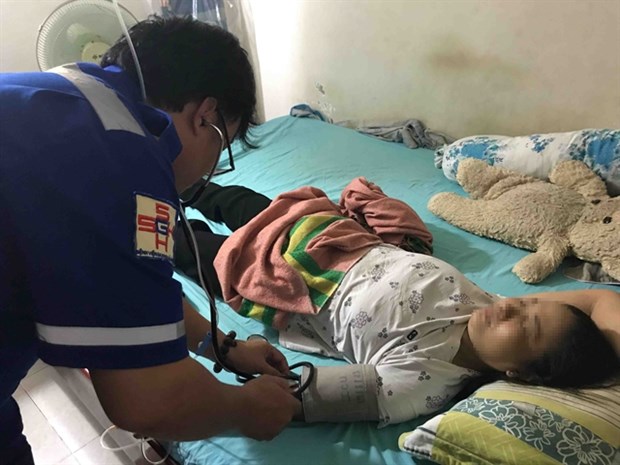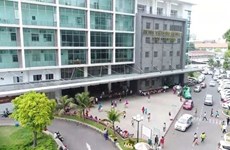HCM City’s satellite emergency service to get more stations
Ho Chi Minh City’s Department of Health plans to set up more satellite emergency stations at public and private hospitals around the city to meet the increasing need for emergency assistance at people’s homes and other locations outside medical facilities.
 A patient receives check-up from HCM City motorbike emergency service personnel at home (Photo: VNA)
A patient receives check-up from HCM City motorbike emergency service personnel at home (Photo: VNA)HCM City (VNS/VNA) – Ho Chi Minh City’s Department of Health plans to set up more satellite emergency stations at public and private hospitals around the city to meet the increasing need for emergency assistance at people’s homes and other locations outside medical facilities.
These stations are managed by the 115 Emergency Centre.
Speaking at a recent meeting held to review emergency responses outside hospitals, Dr Nguyen Duy Long, the centre’s deputy head, said there are 31 stations covering all 24 districts of the city.
Of them, six - Sai Gon General Hospital, Thu Duc District Hospital, District 2 Hospital, District 4 Hospital, and Linh Xuan and Linh Trung general clinics in Thu Duc district - have motorcycle emergency services.
In the first six months of this year 13,961 calls were made to 115 seeking emergency assistance compared to 8,787 in the whole of 2015 when the first station was set up at the Sai Gon General Hospital.
When 115 gets a call, the operator transfers it to either the 115 Emergency Centre or a satellite station closest to the location of the caller.
The public can also call the satellite stations directly if they know the number instead of going through 115.
A doctor and a nurse are then dispatched by ambulance or motorbike to treat the patient on the spot or bring them back to the hospital if required.
But Long said: “They still fail to meet the increased demand.”
There is a shortage of ambulances, with only 11 available out of which only five are meant for daily use. The rest are used only during festivals and other major events in the city.
The centre’s connection with the satellite stations was not “good”, Long said.
He called for setting up a smart operation system to strengthen communication between the centre and stations.
This will enable the centre to know which stations have ambulances available at the time and how long the ambulance will take to reach the patient to come to their house and enter feedback on the quality of emergency aid, he said.
The data would be analysed periodically to develop the emergency network effectively, he added.
Dr Nguyen Huy Thang, Chairman of the HCM City Stroke Association and head of the cerebrovascular diseases department at the People’s Hospital 115, said it was important to strengthen communication between hospitals and the medical emergency network to save lives, especially those with stroke.
The hospital’s study of more than 1,000 patients with stroke it treated in 2016 found that those brought by ambulance have a higher recovery rate than those brought by other vehicles.
However, only 10 percent were brought by ambulance.
Le Bao Huy of Thong Nhat Hospital’s emergency department said only 8 percent of 12,000 patients treated at his department came by ambulance.
Associate Prof Dr Tang Chi Thuong, Deputy Director of the municipal Department of Health, said the department would suggest the municipal People’s Committee to provide the centre and stations with more ambulances.
The staff at the stations would be trained further and the department would petition the Ministry of Health to approve paramedic training courses at universities, he said.
In the absence of trained paramedics in the country the stations depend on doctors and nurses from the hospitals where they are located.-VNS/VNA













